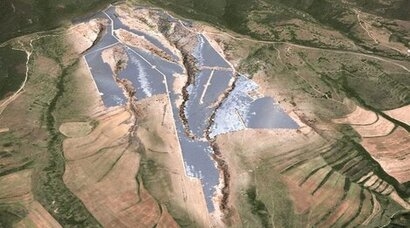
Since September 2022, up to 90 highly skilled SUNOTEC employees have been working on the construction of a ground-mounted PV (photovoltaic) power plant south of Sofia in Bulgaria. The greatest challenge the developer will face is the nature of the terrain – a hilly site in the Verila mountain range, east of the small town of Dupnitsa, about an hour’s drive south of the capital Sofia.
“The location of the solar power plant at an altitude between 700 and 1,000 metres above sea level, with slopes as steep as 18 degrees, is one of the most adventurous and unique in Europe” said Valentin Gospodinov, Country Manager for Bulgaria. “The lower temperatures caused by the high altitude contributes to the generation of additional power. However, this also means that we have to adapt the machinery as well as the sequence of implementation to the challenging topography of the site. Therefore, it is utterly important to have highly experienced workers for the implementation.”
With a nominal output of 124 megawatts peak (MWp), the Verila solar power plant will make a significant contribution to Bulgaria’s green electricity mix from spring 2023 onwards. The new solar park will generate energy equivalent to 12 percent of the current total output of all PV plants in the country. This makes it by far the largest single plant in Bulgaria. It is just one of seven projects that the company is currently undertaking in the country.
“Like many other countries in the EU, Bulgaria needs to dramatically increase its capacity in the renewable energy sector, especially in light of the current climate and energy crises” added SUNOTEC founder and CEO Kaloyan Velichkov. “We have to provide significant amounts of additional renewable energy in the shortest possible timeframe. This is a mammoth task. We are proud to make a vital contribution by building solar power plants like the one in Verila.”
SUNOTEC is responsible for all aspects of engineering, project management, procurement and construction of the new Bulgarian solar power plant located east of Dupnitsa. This entails 220,230 modules, 4,305 tons of steel structure and 1,125.5 kilometres of cabling. This also includes the provision of skilled labour and the availability of specialised machinery from the company’s own fleet.
For additional information:

